I live at the very edge of a massive rock that juts off into the north Aegean Sea. It forms an impressive peninsula made entirely of granite that spans about 5 city blocks, but you would be forgiven for completely failing to notice it. You see, the towering rock peninsula is hidden under a forest of closely packed condominiums that grew almost overnight like barnacles on a rockface at some point in the 80s. You can only suspect you are sitting on a steep peninsula when you walk on the main street and suddenly realise that all vertical roads take a sharp turn downwards.
Human cities were always desperate to conceal any evidence of pre-existing natural terrain by applying their grid systems, straight lines, and liberally vomited concrete to smooth out any remaining rough edges. This rock peninsula has in fact been undergoing constant molestation for at least 2,500 years, even though the first concrete road wasn’t laid down until I was a toddler. At the entrance to the peninsula from the main road, and right next to the bus stop, visitors are greeted by a large sign designating the peninsula’s glorious heritage: it was the site of “Antisara”, a tiny northern outpost of ancient Athens. Ooooh…a goldmine for history buffs. Forget that the natural history of the place was annihilated under layers of thick, clumsily lathered-on, applied and re-applied concrete, let’s forget all of that and instead celebrate the fact that human habitation started fucking this place up as early as three thousand years ago, commemorating it with a sad plaque that sits and collects car exhaust and merely designates that ancient Greeks, yes, wearing draping tunics and spouting philosophy at each turn, once lived here.
Sadly, apart from the plaque itself there is little in the way of actual ancient ruins for visitors to see. What is left of Antisara says more about how civilisations develop rather than about Antisara itself. Fragments of the tiny settlement’s impressive fortification wall that used to girdle the entire peninsula are dotted around the neighbourhood: at the bus stop, in between the buildings, even at the cliff’s edge where vegetation has all but smothered the huge car-sized monoliths the fortification wall is made of. This ancient wall appears, disappears and reappears as it goes through parking lots, private gardens and building foundations. Solitary fragments of the wall sit completely out of place at random spots in the neighbourhood like conceptual art installations, serving exactly the same purpose as remaining fragments of the Berlin wall: “here’s a few meters of a wall, now use your brain to imagine the rest.”
The Ancient Greeks may have rock solid cultural capital to boast, but nothing ever stood in the way of the real estate industry’s bulldozers. The ancient wall survived thousands of years but was eventually cut up, blown up and drowned in cement as and when to make space for apartments. Each successive human civilisation ate the one before it, but all of them played a part in disfiguring, devouring and ultimately erasing the richest civilisation of them all: that of all the non-human species that were here first. I can close my eyes and imagine the types of trees, wild animals and wildflowers that graced this nameless peninsula even before Athenians first landed on their boats, admired the view over the cliff, and decided that this was a great place to raze to the ground and build a citadel.
All areas of human habitation are silent monuments to extinction. They carry not only the history of successive human civilisations, but the long-forgotten legacy of ecological holocausts committed against the flora and fauna that were there first, way before humans arrived. Any casual walk to the grocery store, to work, through a city centre, is a walk through thousands of years of brutal extermination of thriving biocivilisations comprised of thousands of local species. A walk through any human neighbourhood is a walk of shame through extinction.
I exit the peninsula on my way to the beach through the busy road. The sun is hanging high and there is sizzling concrete everywhere with very little tree cover, this in a country gripped by climate change. On the steep way down from the peninsula I pass by the occasional garden filled sparingly with plants bought at nurseries, thrown in a hole and left to their own devices. Most of these plants are highly invasive, I think to myself, forgetting for a minute that I’m probably the most invasive species here. The apprehension and ignorance with which most people approach the topic “gardening” shows just how out of touch humans are not just with outdoor space, but with anything that isn’t a house, kitchen, living room or bedroom.
Exhibit one, the physiotherapy practice at the corner where a plastic lawn is having a battle with real grass trying to break through it. Next, a house that has been closed for years has been completely smothered by a Chinese Virginia Creeper vine. At the far end sits a lonely Mexican Fan Palm on a concrete pedestal surrounded by more concrete, and right on the street in the next house over I notice a Texas Magnolia Grandiflora for the first time ever, even though I’ve walked through here millions of times. There’s only one flower on the tree, but it’s the size of a lamp shade. Right at the edge of the pavement, a hedge of Wisteria provides the first line of defence against the gas fumes and brain-drilling noise of loud engines struggling up the hill, along with other plants that can tolerate long summers of abuse and neglect: pomegranate, Nandina domestica, Ruelia. Towards the bottom of the hill, the much taller buildings cast a dark shadow on a Japanese jasmine that never quite managed to flower. But the honeysuckle did. Ziziphus jujuba trees, another Asian import, greet me with their fragrance and shade right in front of the coffee shop with the dead plants. The owners try to always have something in their flowerpots, but none of it ever seems to stay alive for more than a month. Man’s relationship with plants has fallen victim to late-stage capitalism: we think of plants as either food or perishable decoration, not as actual life forms with needs. When “they don’t perform” for us, we send them straight to the garbage. As keeper of the Unlikely Garden, I am often the recipient of everyone’s “dead” plants. In the vast majority of cases the plants people bring me aren’t even dead. They’re just unloved and ignored. I love them back to life. Sometimes it may take two days, other times two years. I don’t care. Plants are easy as long as you treat them like children: you need to pay attention, and to be patient. At the end of the day, you get what you put into them. So if they fail to thrive, it is overwhelmingly your fault.
At the bottom of the hill is where the beach finally begins. But you still can’t see it from the main road because it is lined almost end-to-end with the most bizarre construction: a series of about 300 changing rooms for the beach goers spanning over a kilometre along the beach and made entirely of…you guessed it! Reinforced concrete. Constructed five decades ago at around the time of the junta and almost impossible to tear down, the biscuit box-looking things have been a permanent eyesore, and I wouldn’t be surprised if at some point they’ve made it to top 100 lists of brutalist architecture. Their existence is a monument to corruption and waste of public money: rather than creating a natural beachfront park that protects the sensitive sand-dwelling plants that used to live here, some fat cat long ago decided to dump thousands of tons of concrete right on the beach and build communist-looking monstrosities. The whole endeavour may look like a military installation, but its original masterminds at least managed to solve what they thought was by far the biggest existential threat at the time: no bare butt will ever make its appearance on this beach, given that every beach goer now has their own changing room (or two).
But before the silly concrete structures could even be built, the otherwise pristine beach first had to be cleared of naval mines left over from the Second World War, when this little town of 40,000 inhabitants decided to flood its coastline with mines to prevent a D-Day-style landing on its shores. My sources tell me that the mines weren’t cleared from the beach until as late as 1973, which is the year I was born and the year the junta was brought down by the people. The huge alien-looking things were dug up from the sand and gathered up in their dozens into huge piles before being taken away to who-knows-were to be disappeared, as the country said goodbye to dictatorship and opened its doors to tourism.
This new era of course meant more concrete. In Greece we have a word called “akalyptos”, which means “a space that is not covered by anything”. The word refers to all areas not in use by humans, but especially things like the spaces between buildings, road margins, and basically any place where “weeds” grow. There is so much hatred for these spaces in Greece that the instinctive reaction is always to pour concrete on them to “keep things neat”. Where the concrete has not invaded, such as on traffic islands or the side of the road running along the beach, the mayor’s landscaping team of mechanised grass cutting maniacs is out in force every May to clear the ground of any signs of life. Poppies, wild rocket, mallow, chamomile and hundreds of other beautiful wildflowers are razed to the ground right at their peak, right when pollinators need them the most both for food and as a place to lay their eggs. It is an unnecessary genocide.
Over the winter the gentle wind from the surrounding hills blows fresh wildflower seed onto these martyric strips of soil landlocked between buildings, pavements and traffic, as the cycle of life begins again. Man destroys, nature creates. Nature never gives up, but humans have long ago given up on their own future.
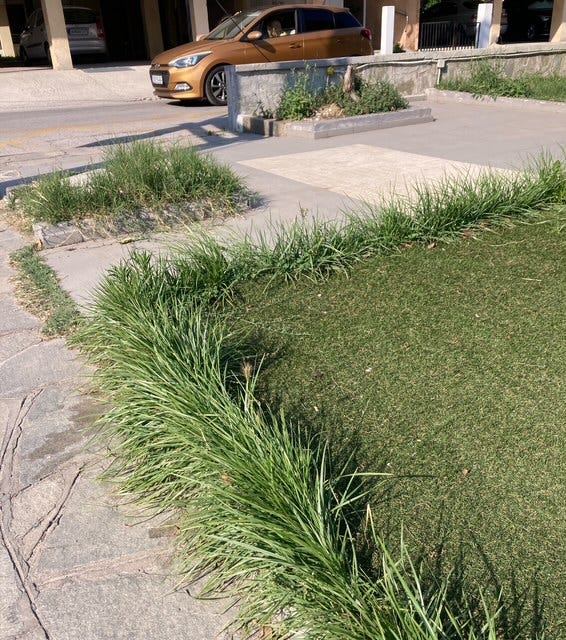
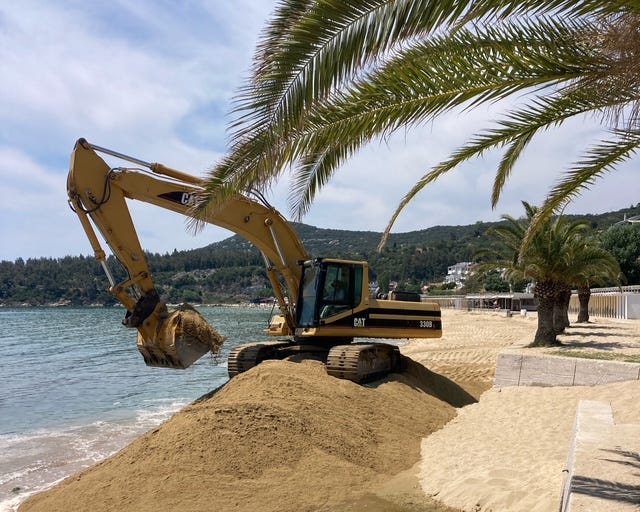
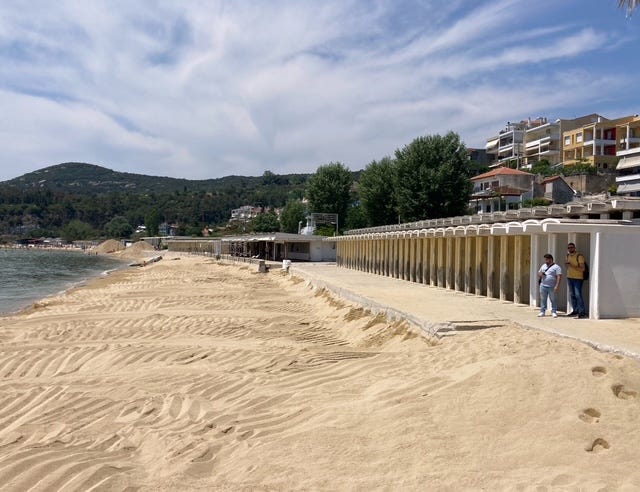

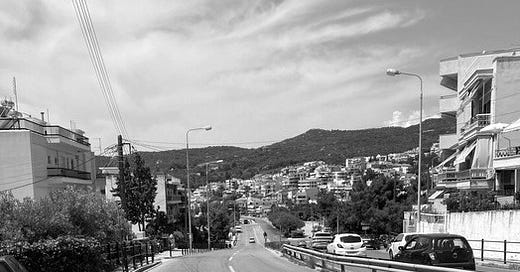





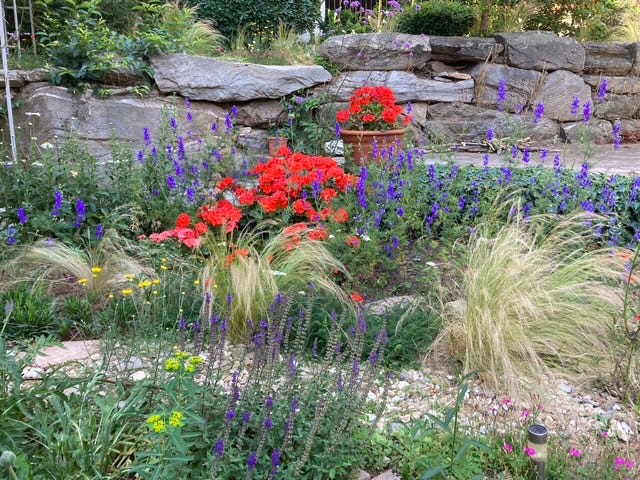
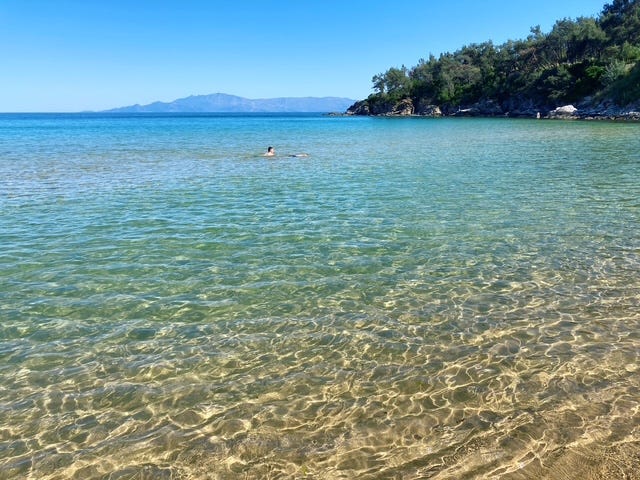
Let's not kid ourselves: "humanity" is f.u.b.a.r. - fucked up beyond all repair.
There's nothing left to do, it's time to become extinct.
George, it’s honestly time for humanity to go extinct. We’re fucked.. and eventually nature will triumph. At the end of the day, it always does. Man cannot win against nature. But it is wonderful to see the ways in which nature “revolts” against civilization. How it pushes back, keeps on fighting. I see it all the time on the sidewalks in my town. Weeds pushing up through the cracks in the sidewalk, wildflowers growing in my yard in spring.. it’s lovely.